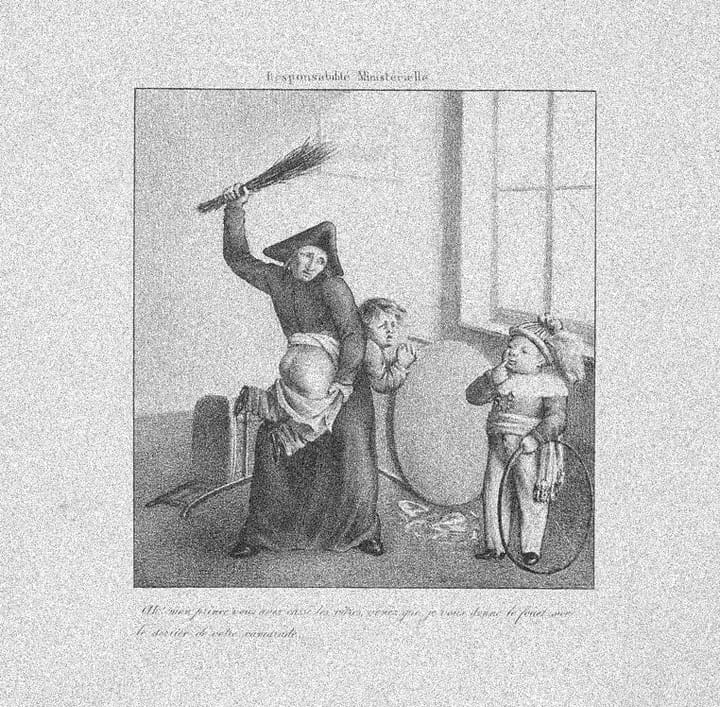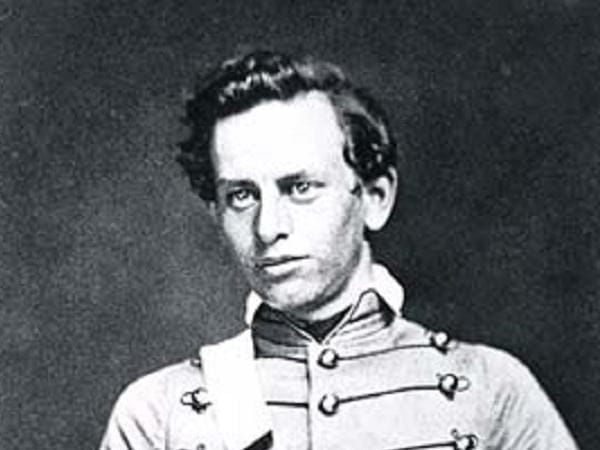The Record Has Shown
A review of Sarah Schulman’s new oral history, Let the Record Show: A Political History of ACT UP New York, 1987-1993.

Review of Sarah Schulman, Let the Record Show: A Political History of ACT UP New York, 1987-1993 (New York: Farrar, Straus & Giroux, 2021).
Sarah Schulman’s new oral history, Let the Record Show: A Political History of ACT UP New York, 1987-1993, gives a fresh perspective on the AIDS Coalition to Unleash Power (ACT UP), a “diverse, non-partisan group of individuals, united in anger, and committed to direct action to end the AIDS crisis.” ACT UP was founded in March 1987 after a speech by Larry Kramer at the Lesbian and Gay Center, but the book decenters people like Kramer by highlighting the experiences of ACT UP’s rank-and-file members. Thematically organizing years of interviews of members from ACT UP New York, the book blends criticism, oral history, and “how to” lessons for activists—a gargantuan task for which Schulman is well qualified. She believes the book exists to “help” contemporary activists “learn from the past to assist organizing in the present.” In her view, activism is something that “creates order, demystifies, and allows an understanding of systems that otherwise feel overwhelming.”
As history and memoir, the book often sparkles. Schulman cautions that she is not a historian, but the details she pulls out provide for an enchanting read. She ably dramatizes some of ACT UP’s biggest achievements, including efforts to allow sick people access to experimental drugs and to change the definition of AIDS patients so women received more equal treatment (the foremost achievement of the group, according to Schulman). Other sections of the book further dramatize a needle exchange, actions at the FDA and CDC, and efforts to end insurance exclusions of people with AIDS.
As a “how-to” manual for activists, however, the book is less engaging. While Schulman doesn’t identify as an anarchist, she does have strong praise for the anarchistic (or, at least, non-hierarchical and ad hoc) mode of ACT UP’s structure. ACT UP was organized around “affinity groups,” loose and often unconnected consortia of rank-and-file members that essentially do their own thing without the imperator of the larger body, but still on the body’s behalf.
Schulman speaks glowingly of the “radical democracy” within the organization, identified as “simultaneity of action, not consensus.” It reads closer to disorder and lack of focus, and the book actually makes it clear just how easy it is to be an anarchist: no one has to take responsibility outside the personal, no one has to wield power, and thus, you can always act “against the grain,” even if your actions redound to the benefit of the powerful.
Anarchists understand the human subject as a liberal individual, free from associative ties and commitments. Socialists instead identify the worker as the political subject, someone inherently linked to society by their labor and relation to the means of production. A worker is a person whose relationship to the eerie machinations of capital and exchange becomes clear in the workplace and during their working day. An organization of workers, as opposed to The Chosen (as Schulman sees the members of ACT UP), exists to wield power in state apparatuses through coordinated, intentional, and conscious efforts.
What, by contrast, brings “The Chosen” together? Despite earlier arguing that the story she is telling is not one of “heroic individuals,” she identifies the constitutive factor bringing ACT UP activists together as “characterological.” How delightfully Calvinist! How nice for these activists, some living, many dead, to have their souls cast in such a light. To Schulman, these were simply people “unable” to sit out a “historic cataclysm.” And it is the fact that they did something that makes them both cohere as a political project and worthy of remembrance.
Never mind the fact that AIDS still exists; that in 2018, the number of new HIV Cases in the United States was 36,400, over half of which were gay Black and Latino men. Never mind, in short, that The Chosen were ultimately ineffective political actors, that they failed in their stated task. Schulman knows this, even gesturing towards it from the outset of the book, but the question “Why did ACT UP dissolve?” and thus, fail to defeat AIDS, haunts the book.
Instead of interrogating ACT UP’s structure and ideological choices to explain its decline, Schulman argues that the group began to split in 1992-93 when people left to form a separate Treatment Action Group (TAG), but then further lost any hope of affecting change in 1996 when protease inhibitors became popularly available as effective HIV treatment. Left largely unexamined is what Jo Freeman called “the tyranny of structurelessness.” For ACT UP, without clear roles inside an organization, continuity became an issue, and order came to rely on an elusive jouissance from big “actions” or “zaps”—one-time events that fed the activist soul like Doritos fill the stomach.
In Schulman’s telling, what ACT UP did best is raise awareness. Large portions of the book discuss protesting cultural institutions such as the Catholic Church or doing art projects. Schulman even lays out a media strategy for activists. These parts of the book are sure to find a sympathetic audience, for whom media coverage and social media promotion are often more important than political actions themselves.
But what is the value of this “awareness”? Breaking a false consciousness, that is, proving someone to be wrong about how they understand something like AIDS, is an insufficient basis for a utopian project. Media-oriented, awareness-raising projects are a dime a dozen. What we need are organization and clarity about things like order and process because they give individuals access and means to operate collectively towards clear goals and priorities. Those goals and priorities come from political education that occur under the auspices of an organization. Rather than a collection of virtuous and like-minded people, an actual political group sustains itself on order, consistency, and focus. ACT UP had very little of these three things.
What’s worse, ACT UP ultimately “acted” in such a way that benefitted large corporations. By protesting CDC and FDA regulations, it’s true that they changed rules for the benefit of people afflicted with AIDS. However, they also benefited big pharmaceutical companies. When ACT UP successfully shortened trial times for AIDS treatment, one interviewee says “drug companies that before had not been willing to put money into developing drugs for exotic opportunistic infections could do so now because they were not looking at a ten-year approval process, but maybe a three-year one.” Another was even clearer about the situation: “There [were] a lot of political agendas that happened to be in sync. I mean the pharmaceutical companies wanted a weaker FDA too.” What does it mean that one’s “activism” pushes corporate deregulation?
Gilead Sciences, the producer of eleven of the most common drugs for HIV prevention and treatment and founded in 1987, the same year as ACT UP New York, began with a $2 million investment into antiviral research with board members like Donald Rumsfeld. While ACT UP was demanding pharmaceutical companies find a treatment for AIDS patients at FDA Headquarters and on the evening news, they were also naming a market for Gilead and Big Pharma to exploit. ACT UP played along with rather than challenging the market, and the complicity was evident in the results. A 2015 National Institute of Health survey found an individual who begins HIV treatment at age 35 has a lifetime expected bill of $326,500, or $597,300 without navigating the labyrinthine cost-saving measures offered under Medicaid and Medicare. Gilead offers a Co-pay Coupon Card to assist with the costs of the drugs they produce.
I don’t wish to suggest ACT UP is at fault for not overthrowing capitalism—in fact the opposite. Plenty is to be learned from this history about method, action, reaction, the uses of the state, organizational methods and more. But those lessons happen to be the opposite of what Schulman wants them to be. No organization that wishes to challenge and win power in the United States should model itself on ACT UP. What lurks in the book’s pages is the current tragedy of the American Left: a “deliriously revolutionary triumphalism” coupled with “sunny denial” of true failure.
ACT UP should be discussed in a tenor appropriate to its limited successes and glaring failures. They likely saved thousands of lives, but ACT UP also failed in their mission to “end the AIDS crisis” because of their self-imposed structural and ideological limits. The group exists today as a nice non-profit that sells branded masks and works towards “equitable access” to new HIV/AIDS treatments.
Embedded in a particular moment of history, it is difficult to see what’s happening right in front of you. That members of ACT UP did what they did, when associational capacity had been gutted and the Left was practically dead, might have made enough sense at the time. But there is no sense in celebrating past failures or worse, pitching them as models to learn from. Schulman’s triumphalist narrative reveals far more about the failure of the American Left during and since the 1990s than it provides lessons of how to move forward and through those failures to a better world. The record has shown, and it’s not particularly flattering.
■
Matthew Zarenkiewicz lives in Philadelphia. His other writing has appeared in The Baffler.



